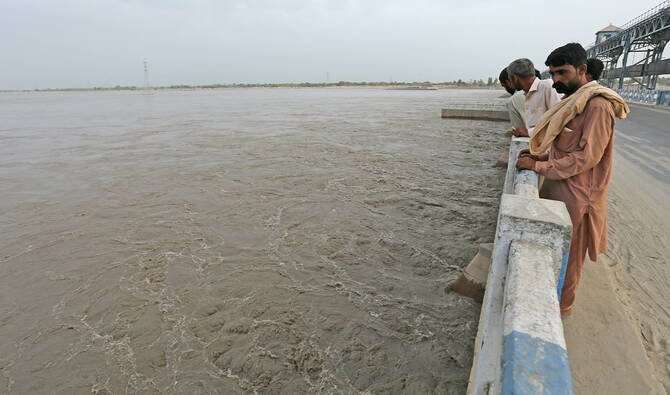Emergency Declared Amid Rising Flood Threat
Pakistan’s Ministry of Water Resources has sounded an emergency flood alert following India’s decision to release additional water into the Sutlej River. The move has raised fears of high flooding across several districts of Punjab, putting thousands of people and livestock at risk. Islamabad has voiced concern over the manner in which the water release was communicated, noting that it bypassed the usual procedures outlined in the Indus Waters Treaty.
The sudden surge in water flow has prompted authorities to act swiftly, reinforcing embankments and keeping close watch on sensitive river points where flooding is most likely to occur.
Districts at Risk and Mass Relocation
The alert has identified Kasur, Okara, Bahawalnagar, and Pakpattan as the most vulnerable districts. Already, more than 70,000 residents have been evacuated from low-lying areas to safer locations, while authorities have also relocated around 169,000 livestock to prevent losses.
Relief camps have been set up in affected zones, offering shelter, food, and medical facilities to displaced families. Emergency response teams, along with local administration and rescue services, are actively working to assist the population and minimize damage. Despite these efforts, officials warn that continuous monitoring is critical as water levels rise.
Bypassing Indus Waters Treaty Protocol
One of the most alarming aspects of this situation is the manner in which the development was communicated. Instead of following the Indus Waters Treaty’s official protocols, India informed Pakistan through diplomatic channels. This has raised questions in Islamabad about transparency and the spirit of cooperation under the decades-old agreement.
The Indus Waters Treaty, signed in 1960, governs the sharing of water from the Indus River system between the two countries. Deviating from its mechanisms has the potential to increase mistrust at a time when bilateral relations already face strain. Officials in Pakistan have stressed the importance of adhering to treaty procedures to avoid unnecessary escalation during natural emergencies.
Preparedness and Response Measures
In response to the flood threat, the Ministry of Water Resources, together with the Provincial Disaster Management Authority (PDMA) and local administrations, has launched a coordinated strategy. This includes 24-hour monitoring of river inflows, reinforcing embankments, and ensuring rapid deployment of rescue boats in high-risk areas.
Health departments and relief organizations have also been mobilized to address potential outbreaks of waterborne diseases that often follow large-scale flooding. The government has urged residents in vulnerable districts to cooperate with evacuation efforts and remain alert to official advisories.
Humanitarian and Agricultural Concerns
Beyond the immediate danger to lives and property, the potential flooding poses a significant threat to agriculture in Punjab, which is often described as Pakistan’s breadbasket. Crops in low-lying areas face the risk of destruction, which could further impact food security. The relocation of livestock, though essential, has also placed pressure on available resources in safe zones.
Officials continue to emphasize that while preventive measures are underway, the situation remains delicate and requires full cooperation from both authorities and the public.





